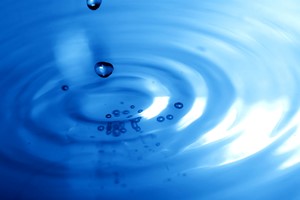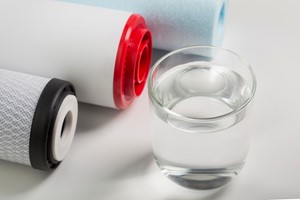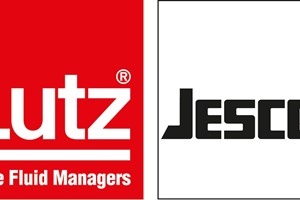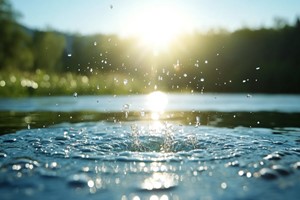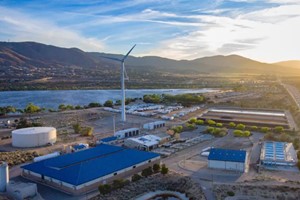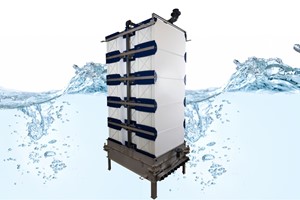The global community faces a growing challenge: a continuous rise in water demand coupled with dwindling freshwater supplies. Nearly a quarter of the world's population experiences high water stress, often depleting almost all their accessible water resources.
By 2050, that number is predicted to increase by one billion. The World Health Organization shared that in 2022, a minimum of 1.7 billion people used a drinking water source contaminated with feces. These statistics paint a stark picture, highlighting the urgent need for operations to implement innovative solutions for water filtration and reuse.
Not only will this ensure compliance with stricter environmental regulations, such as the Safe Drinking Water Act (SDWA) in the United States and the Registration, Evaluation, Authorization, and Restriction of Chemicals (REACH) in Europe, but it will also empower businesses to achieve their sustainability goals.
The Urgency of Water Reuse
Stricter environmental regulations are being enacted to address the challenge of water scarcity. These regulations place limitations on allowable levels of contaminants and mandate water testing capabilities, necessitating that businesses find ways to reduce their environmental impact while meeting their water needs.
Technological Advancements
Chemists and engineers are at the forefront of developing next-generation solutions to address these challenges. These advancements target several key areas:
- Enhanced Membrane Technology: Traditionally, membrane chemistries used fluorinated compounds due to their mechanical and temperature durability. However, these chemicals, such as polytetrafluoroethylene (PTFE), are harmful to the environment and persist indefinitely. Research and development efforts focus on innovative membrane materials that deliver superior performance without relying on harmful perfluorinated compounds.
- Cutting-Edge Desalination Methods: Desalination offers a promising solution for regions with limited freshwater resources. Advancements in desalination technology aim to effectively transform seawater or brackish water into clean freshwater suitable for various industrial applications. These advancements may involve improved membrane technologies or more energy-efficient desalination processes.
- Sustainable Industrial Water Recovery: Industrial processes often consume significant amounts of water. Optimizing water usage within these settings is crucial for achieving sustainability goals. Technologies are being developed to improve the efficient reuse of process water and wastewater within industrial facilities. This may involve advanced filtration techniques, improved separation methods, or the development of closed-loop systems that minimize water consumption.
Collaboration is Key
Sustainable progress in water management hinges on collaboration between industry and academia. Chemists working in research laboratories can develop innovative solutions, while industry partners can provide real-world testing grounds and practical applications for these advancements. Furthermore, the rapid pace of chemical development is crucial in creating effective and environmentally responsible solutions. Significant investments in water filtration technologies by both private and public sectors are essential to ensure the well-being of future generations.
Case Studies in Success
The following real-world examples showcase the effectiveness of these advancements in water filtration and reuse technologies:
Mexico City Laundromats: In Mexico City, most residents rely on laundromats for their laundry needs. These laundromats traditionally receive fresh water deliveries multiple times a day, placing a significant financial burden on business owners and contributing to the city's water shortage.
To address this challenge, PPG, a filtration membrane producer, collaborated with a systems integrator to develop a microfiltration (MF) membrane with antifouling properties. This technology effectively removes contaminants from laundry wastewater, enabling safe and cost-effective reuse.
The MF membrane exceeded 70% water recovery rates, significantly reducing freshwater consumption for laundromats. Importantly, this solution eliminated reliance on harmful PTFEs and PVDFs, demonstrating a commitment to environmental responsibility.
Car Parts Manufacturer:
Another example involves a car parts manufacturer seeking to reduce its environmental impact and optimize water usage. The manufacturer's cleaning processes generated wastewater containing oil and suspended solids, necessitating expensive and inefficient disposal methods.
PPG and a systems integrator implemented an ultrafiltration (UF) membrane solution. UF membranes offer a higher level of purification compared to MF membranes, effectively removing not only oil and solids but also contaminants like viruses, bacteria, and toxins. The UF membrane system employed a spiral wound filter design to separate clean water (permeate) from concentrated oily wastewater (concentrate).
This solution yielded permeate exceeding the manufacturer's quality targets while achieving a water recovery rate of over 90%. The ongoing success of the system translates to reduced water discharge into the municipal water supply, lessening the burden on the city's infrastructure.
Conclusion
By adopting these advancements in water filtration and reuse technologies, water industry operations can address growing water demands, comply with environmental regulations, and achieve sustainability objectives. Effective collaboration, ongoing research, and responsible chemical development are all crucial elements in securing a water-secure future.
By Lisa Walters








